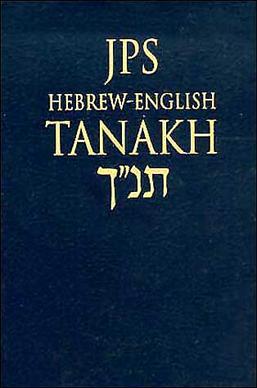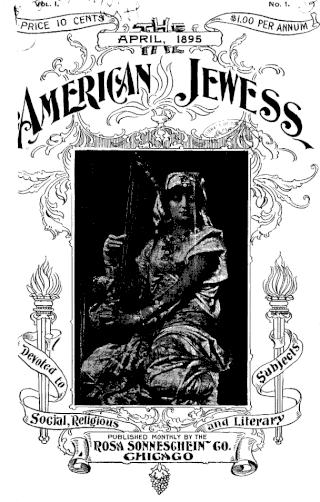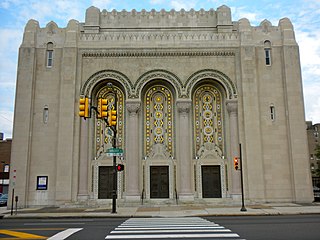Notes
This article includes a list of general references, but it lacks sufficient corresponding inline citations .(July 2013) |
The Jewish Chautauqua Society was the interfaith education program of the Men of Reform Judaism (MRJ), a U.S. nonprofit organization, whose independent existence ceased in 2015 when it was merged into the Union for Reform Judaism. It had defined its mission as seeking "the dissemination of knowledge of the Jewish religion by fostering the study of its history and literature, giving popular courses of instruction, issuing publications, establishing reading-circles, holding general assemblies, and by such other means as may from time to time be found necessary and proper." [1]
The Jewish Chautauqua Society was conceived and founded in 1893 by its chancellor, Henry Berkowitz of Philadelphia, and modeled on the mother Chautauqua of New York. In 1897 the first assembly was held in Atlantic City, and this focusing of the work has so greatly prospered that the original session of two weeks was extended to three. The creation of departments for study and entertainment were similar to those of other Chautauquas. More than this, the influence of the society resulted in the London Jewish Study Society.
The official organ of the Society, Menorah Magazine, was published in New York City; Assembly Record, as well as a special series of various publications, were published in Philadelphia. The Society was incorporated in 1899, and was administered by the following officers: a chancellor, a president, a treasurer, a secretary and director, a field secretary, a board of trustees, and an educational council.
This article includes a list of general references, but it lacks sufficient corresponding inline citations .(July 2013) |

Mordecai Menahem Kaplan, was a Lithuanian-born American rabbi, writer, Jewish educator, professor, theologian, philosopher, activist, and religious leader who founded the Reconstructionist branch of Judaism along with his son-in-law Ira Eisenstein. He has been described as a "towering figure" in the recent history of Judaism for his influential work in adapting it to modern society, contending that Judaism should be a unifying and creative force by stressing the cultural and historical character of the religion as well as theological doctrine.

The Jewish Theological Seminary (JTS) is a Conservative Jewish education organization in New York City, New York. It is one of the academic and spiritual centers of Conservative Judaism and a major center for academic scholarship in Jewish studies. The Jewish Theological Seminary Library is one of the most significant collections of Judaica in the world.

The New Jewish Publication Society of America Tanakh, first published in complete form in 1985, is a modern Jewish 'written from scratch' translation of the Masoretic Text of the Hebrew Bible into English. It is based on revised editions of earlier publications of subdivisions of the Tanakh such as the Torah and Five Megillot which were originally published from 1969–1982. It is unrelated to the original JPS Tanakh translation, which was based on the Revised Version and American Standard Version but emended to more strictly follow the Masoretic Text, beyond both translations being published by the Jewish Publication Society of America.

Kaufmann Kohler was a German-born Jewish American biblical scholar and critic, theologian, Reform rabbi, and contributing editor to numerous articles of The Jewish Encyclopedia (1906).

The history of the Jews in Cincinnati occupies a prominent place in the development of Jewish secular and religious life in the United States. Cincinnati is not only the oldest Jewish community west of the Allegheny Mountains but has also been an institutional center of American Reform Judaism for more than a century. The Israelite, the oldest American Jewish newspaper still (2019) being published, began publication in Cincinnati in 1854.

The American Jewess (1895–1899) described itself as "the only magazine in the world devoted to the interests of Jewish women." It was the first English-language periodical targeted to American Jewish women, covering an evocative range of topics that ranged from women's place in the synagogue to whether women should ride bicycles. The magazine also served as the publicity arm for the newly founded National Council of Jewish Women. The American Jewess was a periodical “published in Chicago and New York between 1895 and 1899” in order to represent the ideas that were important to the American Jewish community during this time. This magazine, though it is not widely remembered in modern society, “was the first Jewish women's journal edited by women that were independent of any organizational or religious ties,” along with the “first English-language journal independently edited by women.”. During the magazines “four years of publication, The American Jewess presented items on contemporary politics, literary figures, aesthetic issues, and… practical matters” along with “book reviews and a children's department." In all of its publications, the magazine engrained its contents with “a Jewish political agenda as well as a feminist agenda,” both of which were often combined “to produce both a strongly Zionist and an early feminist publication." During its time in publication, the magazine published 46 issues throughout four and a half years, producing a circulation totaling approximately 31,000.

Isaac Leeser was an American Orthodox Jewish religious leader, teacher, scholar and publisher. He helped found the Jewish press of America, produced the first Jewish translation of the Bible into English, and helped organize various social and educational organizations. He is considered one of the most important nineteenth century American Jewish personalities. He was "fiercely opposed" to Reform Judaism and was regarded as one of the most important "orthodox" rabbis of his era. Leeser is regarded as a forerunner by both Modern Orthodox Judaism and Conservative Judaism.

Sabato Morais was an Italian-American rabbi, leader of Mikveh Israel Synagogue in Philadelphia, pioneer of Italian Jewish Studies in America, and founder of the Jewish Theological Seminary, which initially acted as a center of education for Orthodox Rabbis.
William Rosenau was a leader of Reform Judaism in the beginning of the twentieth century in the United States.
Eugene B. Borowitz was an American leader and philosopher in Reform Judaism, known largely for his work on Jewish theology and Jewish ethics. He also edited a Jewish journal, Sh'ma, and taught at the Hebrew Union College-Jewish Institute of Religion.

Congregation Rodeph Shalom of Philadelphia, founded in 1795, is the oldest Ashkenazic synagogue in the Western Hemisphere. It is noted historically for its leadership of the Reform Judaism among American Hebrew congregations, for its spiritual influence upon international Jewry, and for its unique 1927 Moorish Revival building on North Broad Street, on the National Register of Historic Places for many decades.

Lance Jonathan Sussman is an historian of American Jewish History, college professor, Chair of the Board of Governors of Gratz College, Melrose Park, PA and until summer 2022 the senior rabbi, now emeritus, at Reform Congregation Keneseth Israel (KI) located in Elkins Park, PA. He is the author of numerous books and articles including: Isaac Leeser and the Making of American Judaism (1995) and Sharing Sacred Moments (1999), and a co-editor of Reform Judaism in America: A Biographical Dictionary and Sourcebook (1993) and New Essays in American Jewish History (2009). Since 2010 he has also published articles on Judaism and art.
The Menorah Journal (1915–1962) was a Jewish-American magazine, founded in New York City. Some have called it "the leading English-language Jewish intellectual and literary journal of its era." The journal lasted from 1915 until 1961.
Henry Berkowitz was a Reform rabbi, educator and author.
Rebekah Hyneman was an American Jewish author and poet, best known for her 1853 work The Leper and Other Poems.
Max James Kohler was a Jewish-American lawyer, immigration activist, and historian from New York.
Henry Barnston was a British-born Jewish-American rabbi.
Moritz Ellinger was a German-born Jewish-American journalist and city official.
Bernhard Felsenthal was a German-born Jewish-American rabbi.
Louis Wolsey was a Jewish-American rabbi.